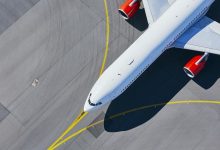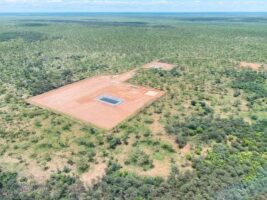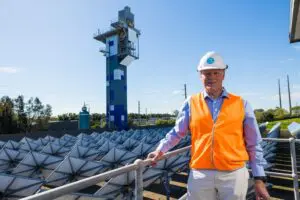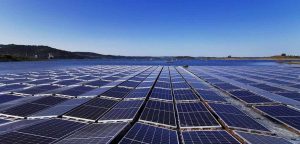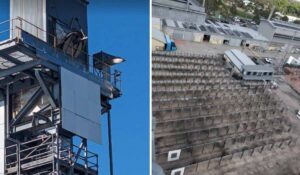Green hydrogen could be used to reduce emissions within the aviation sector within the next five years, with a complete transition to hydrogen fuelled flights possible by 2050, according to a new CSIRO report.
The new research report, prepared by the CSIRO with the support of Boeing Australia, found that hydrogen could begin playing a role in reducing emissions in ground-based aviation operations within the next five years.
The report found that by 2025, hydrogen could begin playing a role in reducing emissions related to ground based transport and support operations at airports.
By 2035, the role of hydrogen in reducing emissions could be substantially larger, when used to supplement fuels used in existing aircraft, starting a process of transitioning away from jet fuels.
While technological advancements would still be required to allow for hydrogen fuelled commercial aircraft, the researchers found that a complete transition to hydrogen fuelled aviation transport could occur by 2050.
“As we see travel resume, hydrogen presents a key solution to enable a sustainable recovery for the industry using liquid renewable fuel, and to grow future resilience from threats like oil shocks,” CSIRO chief executive Dr Larry Marshall said.
“CSIRO’s 2018 breakthrough in fuelling hydrogen-powered cars with liquid renewable fuel has created opportunities for industries to supercharge their decarbonisation by investing in hydrogen.”
“Science becomes real in the hands of visionary partners like Boeing who are willing to embrace science to support the development of a whole new sustainable and resilient industry that supports a green recovery,” Marshall added.
The aviation sector has set a number of goals for reducing emissions, including a 50 per cent cut in net aviation emissions by 2050, a cap on emissions growth from 2020. However, the latter target is set to be reviewed, given the unprecedented disruption to the global aviation sector caused by Covid-19 in 2020.
With both domestic and international travel heavily restricted, the number of flights being taken has fallen dramatically in 2020. Early figures released by the Australian government in May estimated that fuel use for domestic aviation had fallen by almost 80 per cent as a result of Covid-19 travel restrictions.
However, the opportunity to reduce emissions once the aviation sector has recovered would be substantial, with historical global energy use from air transport consuming 3.2 times more energy than the entirety of Australia. With strong growth in the number of trips being taken by passengers, emissions in the aviation sector could triple by 2050, unless action is taken to reduce emissions in the sector.
The CSIRO report sees opportunities in green hydrogen being used as the basis for the production of zero emissions ‘electro-fuels’ where hydrogen is combined with carbon dioxide to provide direct jet-fuel replacements.
The blending of smaller amounts of ‘electro-fuels’ with conventional, fossil fuel, derived jet fuels could commence by the 2030s, and start cutting into aircraft emissions before technologies to develop a complete transition to zero emission fuels become mature.
Using an electro-fuel approach would also allow emissions reductions to be achieved using existing airline fleets, and would avoid the need to drive early retirements of aircraft that have required a significant upfront investment by airlines.
“Given the low rate of asset turnover within the aviation sector, electro-fuels represent one of the primary ways in which hydrogen can be used to achieve meaningful decarbonization before 2050 without extensive changes in infrastructure,” the report says.
Early hydrogen adoption could take place in areas that support airport operation, including hydrogen fuelled passenger transport to, from and around airports.
The report concluded that ongoing research and development would be required, both to drive down the costs of hydrogen production to make the zero emissions fuels commercially competitive, as well as to solve some of the technical challenges of hydrogen transport and storage.
“To facilitate the uptake of hydrogen planes closer to 2050, a considerable amount of research is required in the immediate term regarding changes in engine design and the development of on-aircraft infrastructure such as light-weight cryogenic storage tanks that minimize hydrogen boil-off,” the report says.
In partnering to produce the report, Boeing Australia said that it was committed to helping airlines achieve their emissions reduction targets for the sector.
“Boeing is committed to building a more sustainable future and we, along with the broader aviation sector, are committed to achieving the aviation industry goal of halving CO2 net emissions by 2050 relative to 2005 levels,” Boeing Australia research and technology general manager Michael Edwards said.
“In addition to more efficient aircraft, sustainable aviation fuels like hydrogen are a necessary contributor to the decarbonisation of aviation, and we are committed to furthering their development.”

